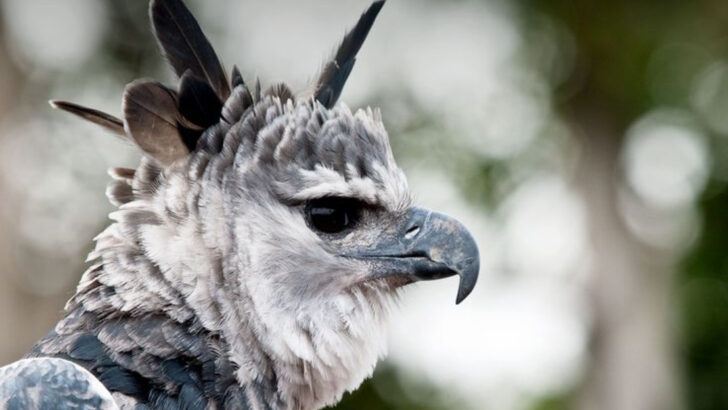Harpy eagles are not just birds; they are monsters of the sky. With talons that could rip through anything and wingspans that scream dominance, they’re the stuff of legend.
This isn’t your average bird. Harpy eagles rule the treetops like royalty, hunting with precision and power that leaves every other bird in the dust. Their grip? Unmatched. Their strength? Unbelievable. And their stare? Absolutely spine-chilling.
If you think you’ve seen a fierce bird of prey, think again. The harpy eagle is in a class of its own. When it takes flight, the forest knows to stay quiet. These majestic creatures are predators at their peak, and no one dares to challenge them.
Ready to discover what makes these fearsome birds the kings of the skies? Let’s dive into the 13 reasons why the harpy eagle reigns supreme in the world of predators.
Powerful Talons
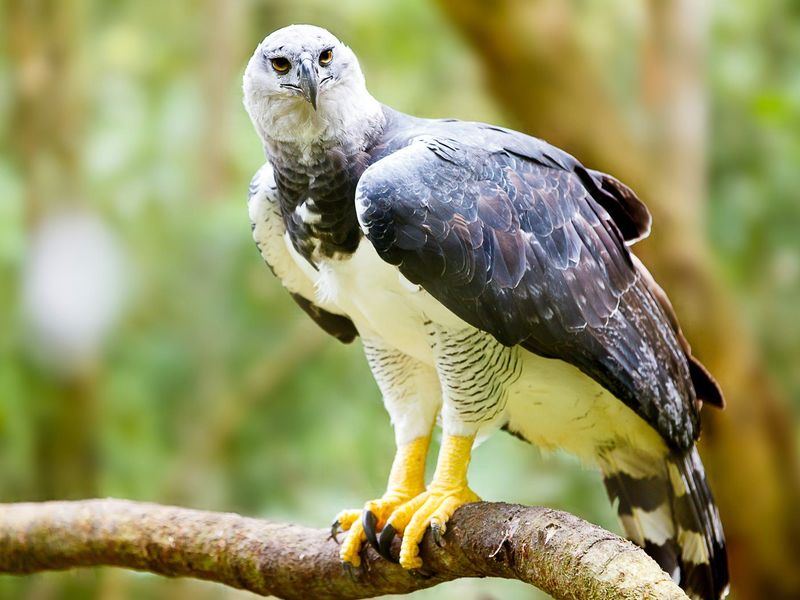
The Harpy Eagle’s talons are among the largest and strongest of any eagle species, measuring up to 5 inches in length. Each talon is razor-sharp, capable of exerting tremendous pressure. This physical trait allows them to effortlessly snatch and carry prey as heavy as monkeys and sloths. Their grip is so powerful, it can break bones or even crush skulls in an instant.
These formidable talons are not only crucial for hunting but also help secure a firm grip when perched on branches in the rainforest canopy. Their talons truly set them apart as the ultimate predator.
Impressive Size
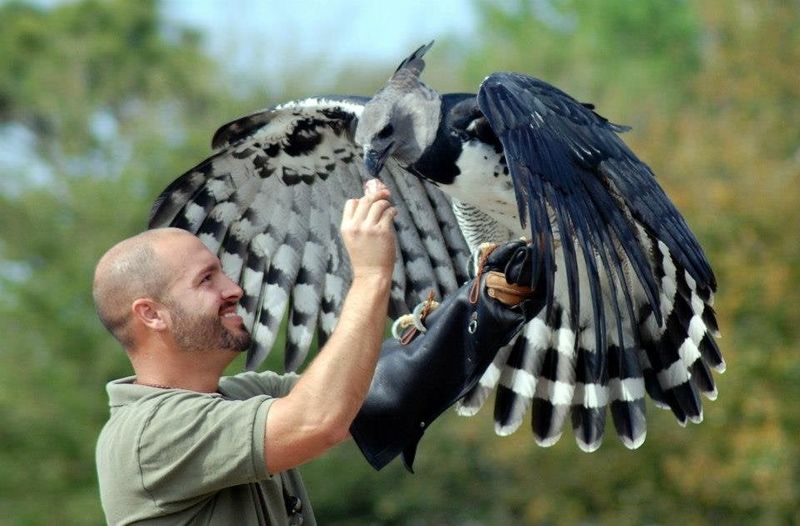
Harpy Eagles are among the largest and most powerful birds of prey. Females, larger than males, weigh up to 20 pounds and boast a wingspan of up to 7 feet. This impressive size grants them the ability to dominate their territory and hunt large prey.
Despite their size, Harpy Eagles exhibit remarkable agility in flight, navigating through dense forests with ease. Their sheer size and strength make them apex predators in their environment, commanding respect from all other wildlife. Their intimidating presence is a testament to their dominance in the avian world.
Keen Vision
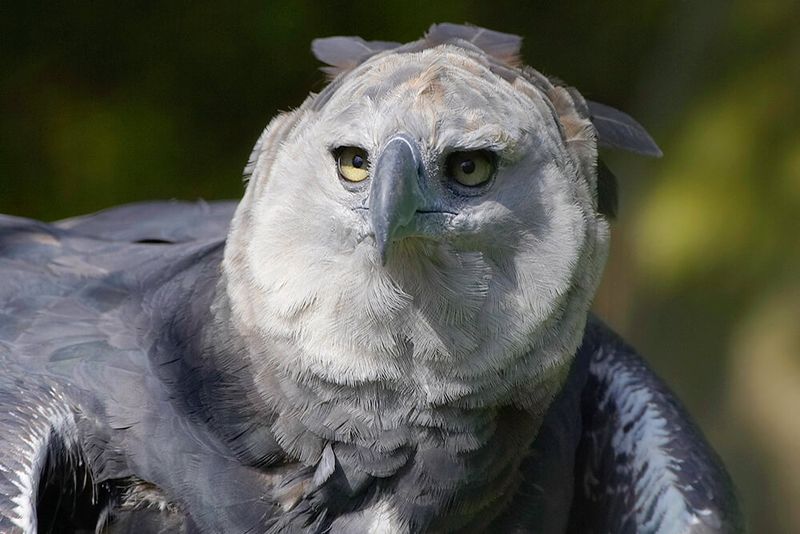
The Harpy Eagle’s vision is one of its most remarkable attributes. Capable of seeing up to eight times more clearly than humans, they can spot prey from a mile away. This exceptional eyesight allows them to detect even the slightest movements in the dense rainforest.
Their sharp vision is essential for hunting, enabling them to track and capture prey with precision. It also aids in navigating their complex habitat, avoiding obstacles as they soar through the trees. With eyesight like this, the Harpy Eagle is always one step ahead of its prey.
Majestic Crest
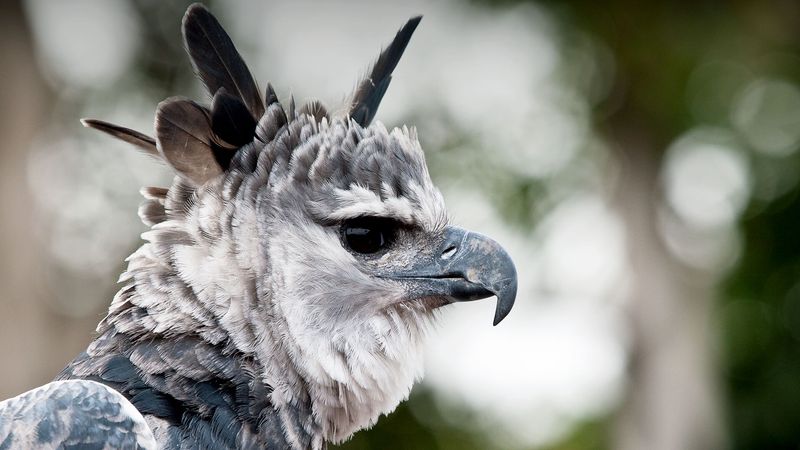
The Harpy Eagle is distinguished by its striking feathered crest, which can be raised or lowered. This crest isn’t just for show; it serves various practical purposes. When raised, it can make the eagle appear larger and more intimidating to potential threats.
Additionally, the crest helps funnel sounds to their ears, enhancing their auditory capabilities. This unique adaptation allows them to detect prey and other noises in the dense jungle. The majestic crest is a symbol of the Harpy Eagle’s regal presence and adaptability in its environment.
Stealthy Hunters

Harpy Eagles are master hunters, known for their stealth and patience. They can glide silently through the rainforest canopy, undetected by potential prey. This ability to move quietly allows them to ambush their targets with precision and surprise.
Their hunting technique involves perching high up to survey the area, then swooping down swiftly to capture their prey. By maintaining a low profile and moving with grace, these eagles ensure a high success rate in their hunts. Their stealthy approach makes them effective and feared predators.
Remarkable Strength
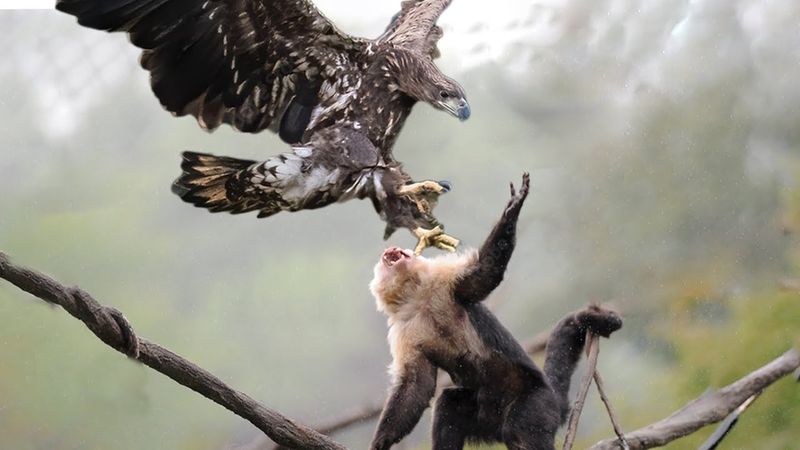
The Harpy Eagle’s strength is extraordinary, allowing it to lift and carry animals weighing nearly its own body weight. This capability is vital for transporting prey to their nests, often located high in the trees.
Their muscular build and powerful wings contribute to this strength, enabling them to power through the air with heavy burdens. This strength not only aids in hunting but also in defending their territory from intruders. The combination of strength and agility makes the Harpy Eagle an unrivaled force in the animal kingdom.
Adaptable Diet
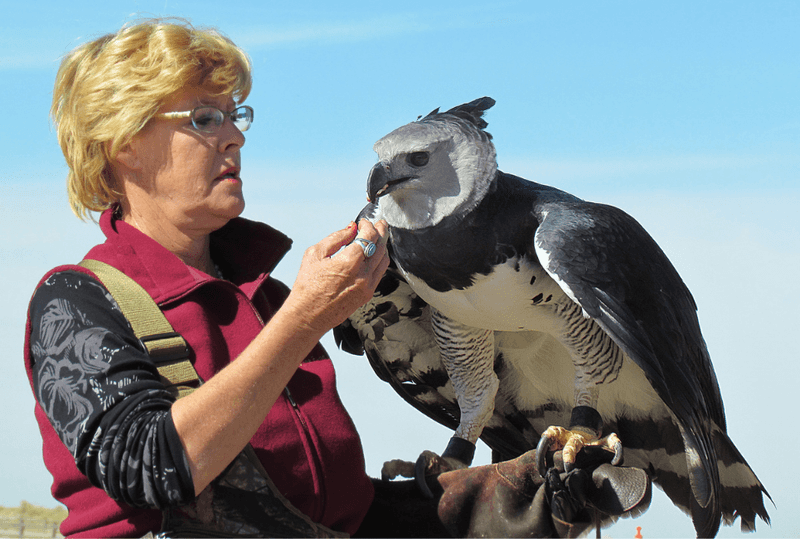
Harpy Eagles have a highly adaptable diet, primarily consisting of tree-dwelling mammals like sloths and monkeys. However, they are opportunistic hunters and will also consume birds, reptiles, and even small deer if the opportunity arises.
This dietary flexibility ensures they can thrive in diverse environments and weather conditions. Their adaptability in hunting and feeding habits allows them to maintain their position at the top of the food chain, ensuring survival even when preferred prey is scarce. This versatility is a key factor in their dominance.
Longevity and Loyalty
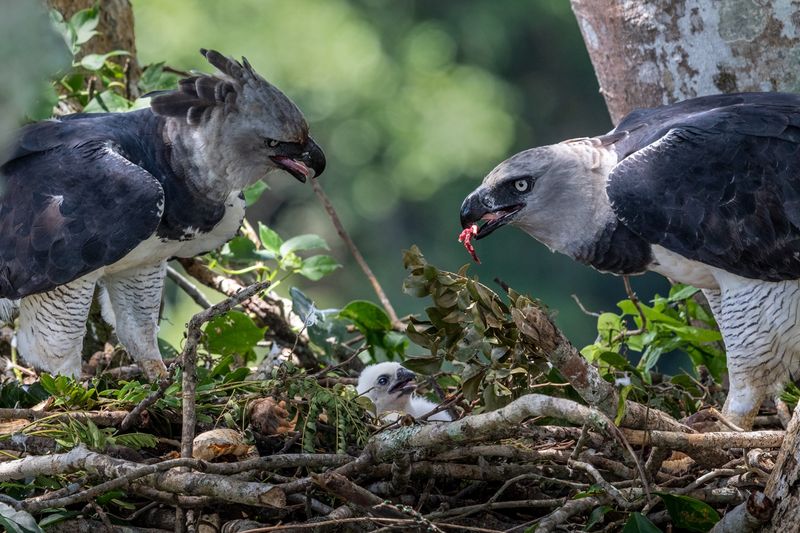
Harpy Eagles are known for their long lifespan, often living up to 35 years in the wild. This longevity is complemented by their strong pair bonds, as they mate for life. Such long-term partnerships enable them to successfully raise and care for their young.
Nesting high in the canopy, they invest significant time and effort into parenting, fostering the next generation of eagles. Their commitment to their mates and offspring ensures the continuation of their lineage, and their role as apex predators in their ecosystem. Loyalty and lifespan are hallmarks of their species.
Habitat Dominance
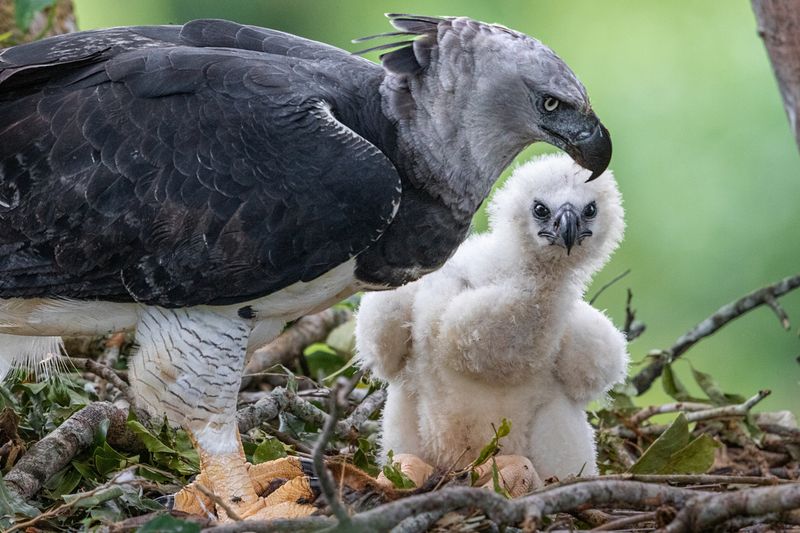
Harpy Eagles hold dominion over their rainforest habitats, establishing large territories that they fiercely protect from intruders. Their presence alone can deter other predators, making them the kings of their domain.
By maintaining control over prime hunting grounds, they ensure access to ample food resources for themselves and their offspring. This territorial dominance is crucial for their survival and success in the wild. Their ability to command their environment is a testament to their powerful status among birds of prey.
Unique Vocalizations
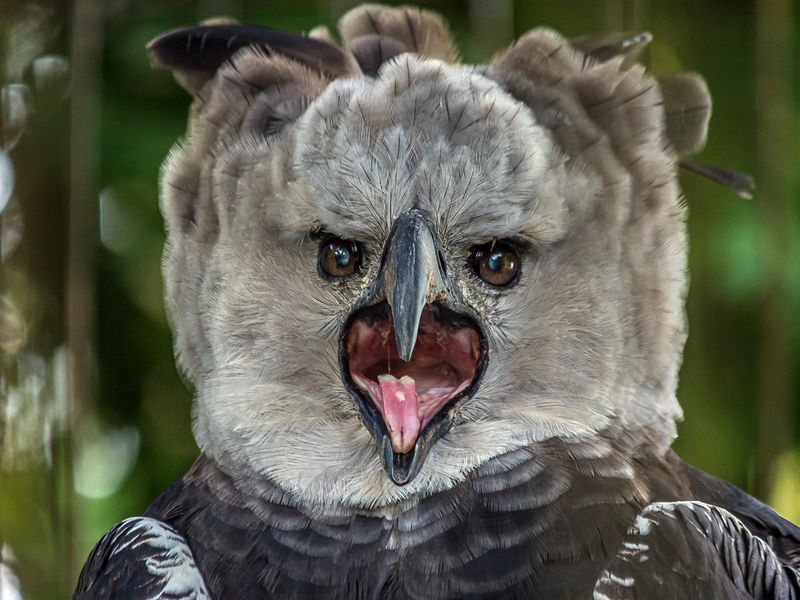
The Harpy Eagle has a unique set of vocalizations used for communication with mates and young. These calls range from high-pitched whistles to deep, resonant sounds that can be heard over long distances.
Vocalizations are crucial for maintaining contact in the dense rainforest, where visibility is often limited. They also play a role in territorial disputes and courtship rituals. This vocal versatility enhances their ability to thrive in their complex habitat, ensuring effective communication across vast areas.
Such communication skills are vital to their social structure and survival.
Regal Appearance
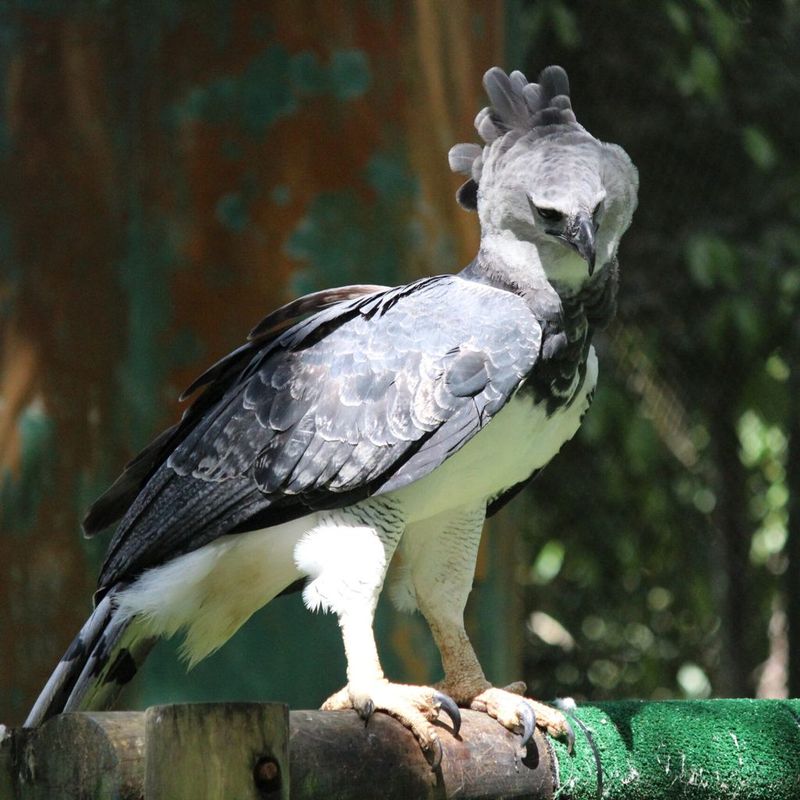
The Harpy Eagle’s regal appearance is characterized by its bold black and white plumage, accentuated by a fierce, penetrating gaze. This impressive visual presence commands attention and respect in the wild.
Their striking looks are not merely for show; they play a role in communication and intimidation. The contrast in their feathers makes them stand out, signaling their status as top predators. Their appearance is a reflection of their inner strength and dominance, making them one of the most fascinating birds of prey to observe.
Intelligent Problem Solvers
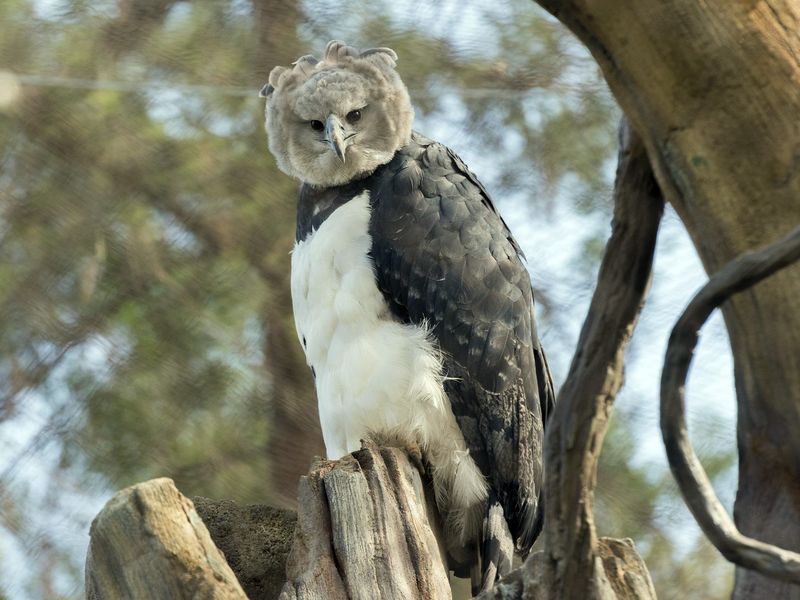
Harpy Eagles exhibit high levels of intelligence, essential for navigating complex environments. They are known to solve problems and adapt their hunting strategies based on the situation, showcasing cognitive abilities rare in birds.
This intelligence is evident in their ability to select optimal hunting paths and adapt when challenges arise. By learning from their surroundings, they enhance their hunting efficiency and survival rates. Their problem-solving skills are a testament to their adaptability, making them formidable predators in any situation.
Cultural Symbolism
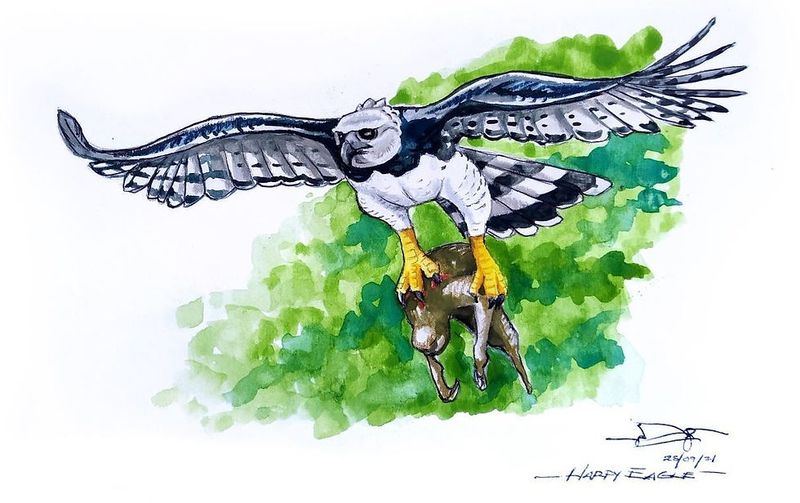
The Harpy Eagle holds significant cultural symbolism, particularly among indigenous peoples of Central and South America. Often seen as a symbol of power, freedom, and the connection between the earth and sky, they are revered in folklore and art.
Their presence in cultural narratives highlights their importance beyond the natural world, as they inspire awe and respect. By embodying strength and majesty, Harpy Eagles remain influential figures in cultural identity. This cultural reverence further cements their status as iconic birds, bridging nature and human tradition.

